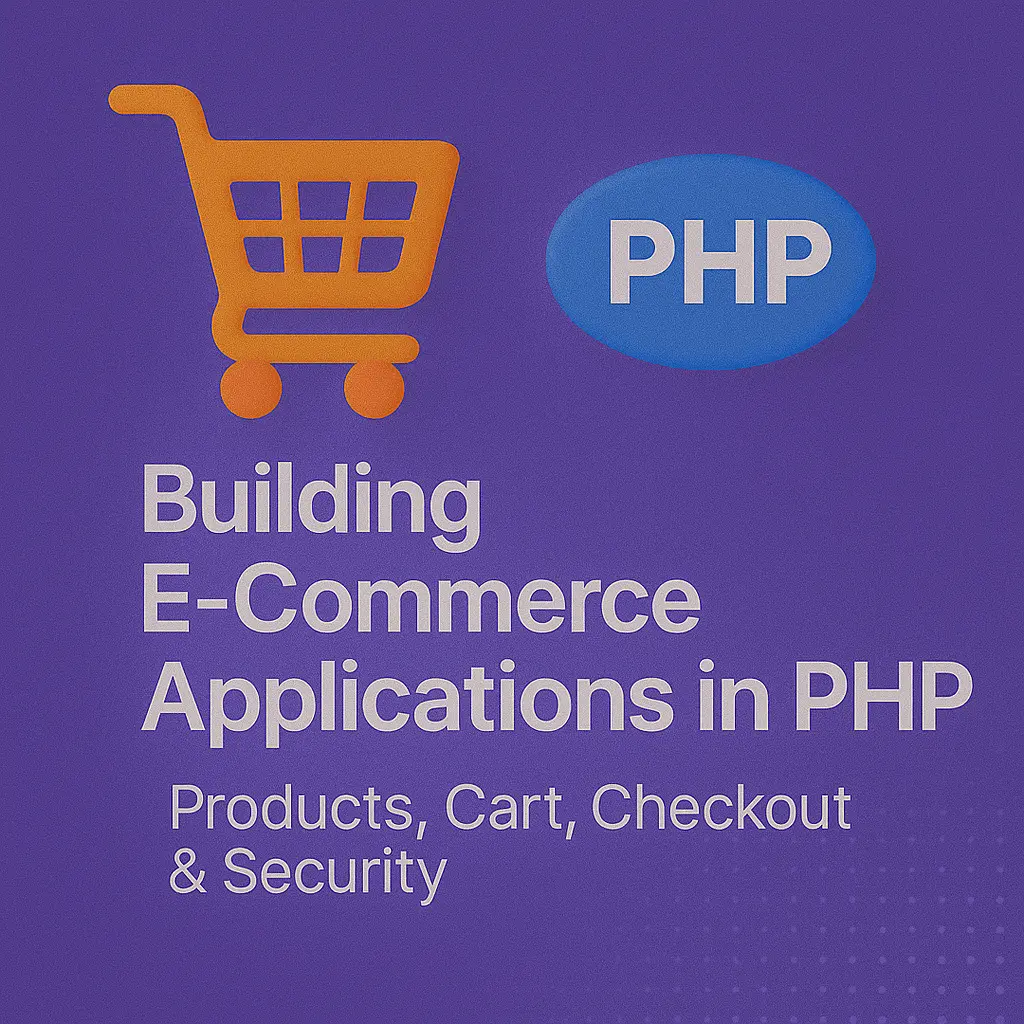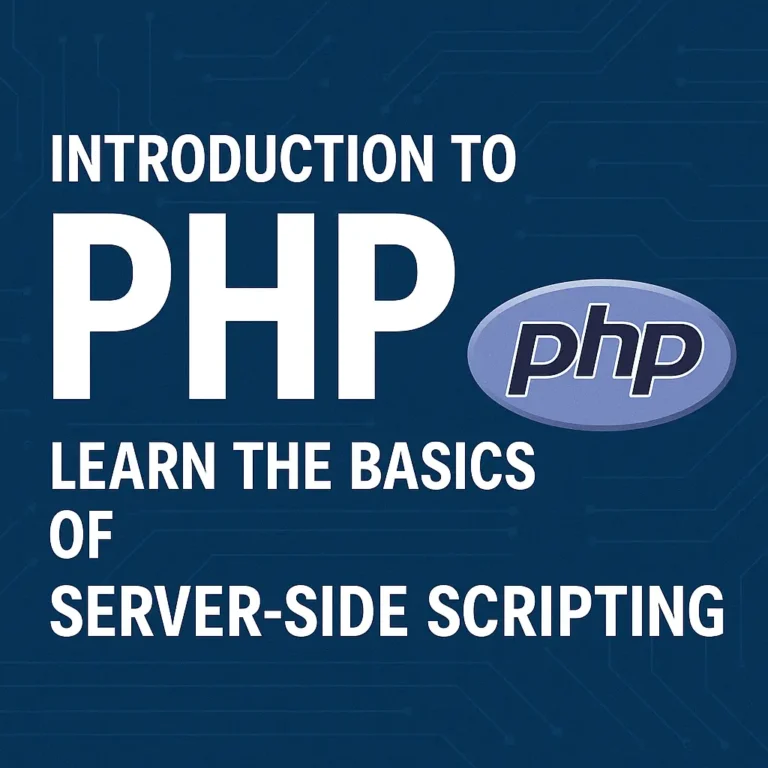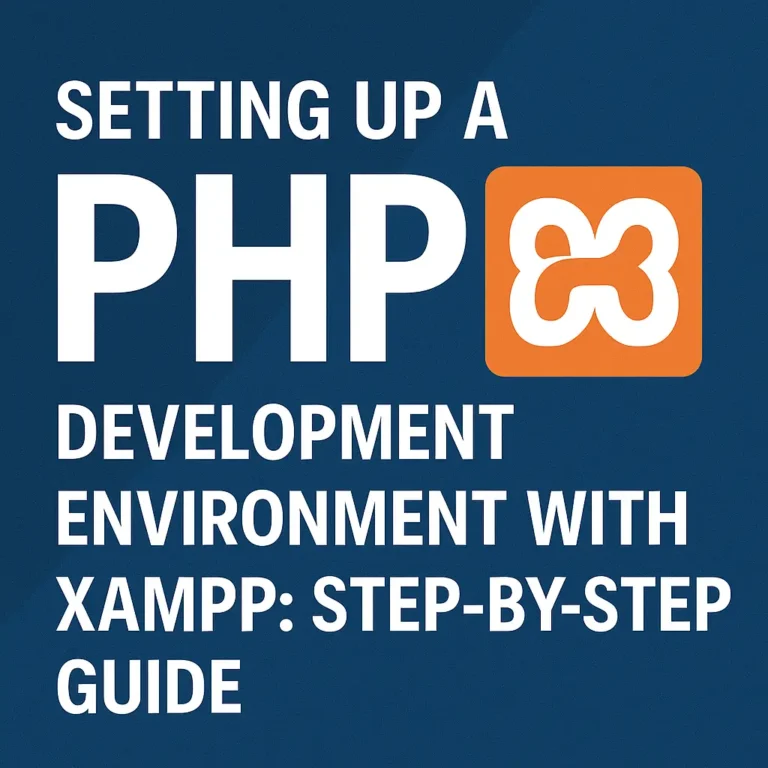Introduction
In today’s digital era, e-commerce has become an indispensable part of the global economy. From small businesses to multinational corporations, everyone is leveraging the power of online platforms to reach customers worldwide. PHP, being one of the most widely used server-side scripting languages, offers a robust foundation for building dynamic and scalable e-commerce applications. In this article, we’ll explore the fundamentals of e-commerce and demonstrate how to implement essential e-commerce features using PHP.
E-commerce Basics
Before delving into the implementation details, let’s briefly discuss the key components and concepts of e-commerce:
Product Catalog:
A centralized database or repository containing information about the products available for sale. This includes product names, descriptions, images, prices, and other relevant attributes.
User Authentication and Authorization:
Secure authentication mechanisms to allow users to create accounts, log in, and manage their profiles. Authorization controls access to specific features based on user roles and permissions.
Shopping Cart:
A virtual cart where users can add products they intend to purchase before proceeding to checkout. The shopping cart keeps track of selected items, quantities, and total prices.
Checkout Process:
A series of steps that users must complete to finalize their purchases. This typically includes providing shipping and billing information, selecting payment methods, and confirming orders.
Payment Gateway Integration:
Integration with third-party payment gateways to facilitate secure online transactions. Payment gateways handle payment processing and ensure sensitive financial information is transmitted securely.
Implementing E-commerce Features in PHP
Now, let’s dive into the implementation of essential e-commerce features using PHP. We’ll cover each feature with code examples to illustrate the concepts.
Product Catalog Management:
To manage the product catalog, we’ll create a database table to store product information. Here’s a simple SQL schema for the product table:
CREATE TABLE products (
id INT AUTO_INCREMENT PRIMARY KEY,
name VARCHAR(255) NOT NULL,
description TEXT,
price DECIMAL(10, 2) NOT NULL,
image_url VARCHAR(255),
created_at TIMESTAMP DEFAULT CURRENT_TIMESTAMP
);
Next, we’ll create PHP scripts to interact with the database and perform CRUD operations on products.
<?php
// Connect to the database
$pdo = new PDO('mysql:host=localhost;dbname=ecommerce', 'username', 'password');
// Function to fetch all products
function getProducts() {
global $pdo;
$stmt = $pdo->query('SELECT * FROM products');
return $stmt->fetchAll(PDO::FETCH_ASSOC);
}
// Function to add a new product
function addProduct($name, $description, $price, $image_url) {
global $pdo;
$stmt = $pdo->prepare('INSERT INTO products (name, description, price, image_url) VALUES (?, ?, ?, ?)');
$stmt->execute([$name, $description, $price, $image_url]);
return $pdo->lastInsertId();
}
// Function to retrieve a product by ID
function getProductById($id) {
global $pdo;
$stmt = $pdo->prepare('SELECT * FROM products WHERE id = ?');
$stmt->execute([$id]);
return $stmt->fetch(PDO::FETCH_ASSOC);
}
// Function to update a product
function updateProduct($id, $name, $description, $price, $image_url) {
global $pdo;
$stmt = $pdo->prepare('UPDATE products SET name = ?, description = ?, price = ?, image_url = ? WHERE id = ?');
$stmt->execute([$name, $description, $price, $image_url, $id]);
return $stmt->rowCount();
}
// Function to delete a product
function deleteProduct($id) {
global $pdo;
$stmt = $pdo->prepare('DELETE FROM products WHERE id = ?');
$stmt->execute([$id]);
return $stmt->rowCount();
}
With these functions, we can perform CRUD operations on the product catalog from our PHP application.
User Authentication and Authorization:
For user authentication and authorization, we’ll implement a basic login system using PHP sessions and a user table in the database.
CREATE TABLE users (
id INT AUTO_INCREMENT PRIMARY KEY,
username VARCHAR(50) UNIQUE NOT NULL,
password VARCHAR(255) NOT NULL,
email VARCHAR(100) UNIQUE NOT NULL,
created_at TIMESTAMP DEFAULT CURRENT_TIMESTAMP
);
We’ll also create PHP scripts to handle user registration, login, and logout.
<?php
session_start();
// Function to register a new user
function registerUser($username, $email, $password) {
global $pdo;
$hashedPassword = password_hash($password, PASSWORD_DEFAULT);
$stmt = $pdo->prepare('INSERT INTO users (username, email, password) VALUES (?, ?, ?)');
$stmt->execute([$username, $email, $hashedPassword]);
return $pdo->lastInsertId();
}
// Function to authenticate a user
function authenticateUser($username, $password) {
global $pdo;
$stmt = $pdo->prepare('SELECT * FROM users WHERE username = ?');
$stmt->execute([$username]);
$user = $stmt->fetch(PDO::FETCH_ASSOC);
if ($user && password_verify($password, $user['password'])) {
$_SESSION['user_id'] = $user['id'];
return true;
}
return false;
}
// Function to check if a user is logged in
function isLoggedIn() {
return isset($_SESSION['user_id']);
}
// Function to log out a user
function logoutUser() {
session_unset();
session_destroy();
}
These functions provide the basic infrastructure for user authentication and authorization in our e-commerce application.
Shopping Cart Management:
The shopping cart functionality allows users to add products to their carts, update quantities, and remove items. We’ll implement the shopping cart using PHP sessions to store cart data temporarily.
<?php
session_start();
// Function to add a product to the shopping cart
function addToCart($productId, $quantity) {
if (!isset($_SESSION['cart'])) {
$_SESSION['cart'] = [];
}
if (isset($_SESSION['cart'][$productId])) {
$_SESSION['cart'][$productId] += $quantity;
} else {
$_SESSION['cart'][$productId] = $quantity;
}
}
// Function to update the quantity of a product in the shopping cart
function updateCartItem($productId, $quantity) {
if (isset($_SESSION['cart'][$productId])) {
$_SESSION['cart'][$productId] = $quantity;
}
}
// Function to remove a product from the shopping cart
function removeFromCart($productId) {
if (isset($_SESSION['cart'][$productId])) {
unset($_SESSION['cart'][$productId]);
}
}
// Function to get the contents of the shopping cart
function getCartContents() {
return isset($_SESSION['cart']) ? $_SESSION['cart'] : [];
}
These functions enable users to interact with their shopping carts, adding, updating, and removing items as needed.
Checkout Process:
Finally, we’ll implement the checkout process, allowing users to review their orders, provide shipping and billing information, and complete their purchases. The checkout process typically involves multiple steps, and we’ll use PHP sessions to maintain the state of the checkout process.
<?php
session_start();
// Function to place an order
function placeOrder($userData, $cartContents) {
// Process the order and store it in the database
// Calculate total order amount, update inventory, etc.
// Clear the shopping cart and return order details
$_SESSION['cart'] = [];
return ['order_id' => uniqid(), 'total_amount' => 100]; // Placeholder data
}
// Function to retrieve order details
function getOrderDetails($orderId) {
// Retrieve order details from the database
return ['order_id' => $orderId, 'total_amount' => 100]; // Placeholder data
}
This function simulates the process of placing an order, updating inventory, and storing order details in the database.
Conclusion
Building e-commerce applications in PHP requires careful planning and consideration of various factors, including product catalog management, user authentication, shopping cart functionality, and the checkout process. In this article, we’ve explored the fundamentals of e-commerce and demonstrated how to implement essential e-commerce features using PHP.
By leveraging PHP’s robust ecosystem and integrating with databases, session management, and third-party services, developers can create dynamic and scalable e-commerce solutions tailored to their specific requirements. Whether you’re building a small online store or a large-scale e-commerce platform, PHP provides the tools and flexibility needed to bring your vision to life.






